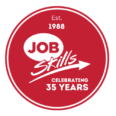
Craft a Stunning Professional Website for Your Self-Employment Journey
In an era where digital presence is paramount, having a professional website is no longer optional for self-employed individuals. It’s your business card, portfolio, and sales pitch all rolled into one. But, how do you create a website that not only looks good but also functions seamlessly? This blog post will guide you through every step to build a professional website that showcases your skills and attracts clients.
The Importance of a Professional Website for Self-Employment
Whether you’re a freelance designer, consultant, or small business owner, your website serves as the first impression for potential clients. A professional website establishes credibility, allows you to showcase your work, and provides a platform to communicate your offerings effectively. In this blog, we will cover everything from planning and designing your website to optimizing it for search engines.
Planning Your Website
Define Your Purpose and Goals
Before jumping into the design process, it’s crucial to clarify what you want to achieve with your website. Are you looking to attract new clients, sell products, or showcase your portfolio? Identifying your primary goals will guide the entire website creation process. Additionally, understanding your target audience is key. Who are they? What do they need? Answering these questions will help you tailor your website to meet their expectations.
Choose a Domain Name
Your domain name is your website’s address on the internet. It should be memorable, relevant, and easy to spell. Tips for selecting a domain name include:
- Keeping it short and simple
- Using keywords related to your business
- Avoiding numbers and hyphens
Once you have a few options, check their availability using a domain registration service like GoDaddy or Namecheap, and secure your chosen domain.
Plan Your Website Structure
A well-structured website makes it easy for visitors to find the information they need. Decide on the key pages you’ll need, such as Home, About, Services, Portfolio, and Contact. Creating a sitemap can help you visualize the layout and organization of your content. This step ensures that your website will be user-friendly and cohesive.
Choosing a Website Builder or Platform
Assessing Your Needs
Are you a tech-savvy individual who loves customization, or do you prefer simplicity and ease of use? Your preferences will determine the best website builder or platform for you. For simple drag-and-drop functionality, consider Wix or Squarespace. If you’re looking for more customization options, WordPress might be the better choice.
Pros and Cons of Popular Platforms
Each platform has its strengths and weaknesses:
- WordPress: Highly customizable with thousands of plugins but has a steeper learning curve.
- Wix: User-friendly with a variety of templates, but less flexible in terms of customization.
- Squarespace: Excellent design quality and ease of use, but fewer third-party integrations.
Consider your specific needs and budget when making a decision.
Setting Up Your Chosen Platform
Once you’ve selected a platform, the initial setup is usually straightforward:
- Sign up for an account.
- Choose a template or theme that fits your brand.
- Install essential plugins or extensions, such as SEO tools, contact forms, and security features.
Follow the platform’s setup guide to ensure you don’t miss any critical steps.
Designing Your Website
Selecting a Template or Theme
Choose a template or theme that is professional and aligns with your brand identity. Most platforms offer a variety of options that you can customize. Look for designs that are clean, modern, and easy to navigate. Customizing the template to fit your needs will make your website unique and tailored to your brand.
Branding and Aesthetics
Consistent branding is crucial for a cohesive look. This includes your logo, color scheme, and fonts. Your website should reflect your brand’s personality and values. Tools like Canva can help you create professional logos and graphics that enhance your site’s visual appeal.
User Experience (UX) Best Practices
A great user experience keeps visitors engaged. Make sure your website is:
- Easy to navigate with clear menus and labels
- Mobile-responsive, meaning it looks and functions well on all devices
- Fast-loading to prevent visitors from leaving due to slow performance
Consider using tools like Google PageSpeed Insights to check your website’s performance.
Creating Engaging Content
Home Page
Your home page is often the first thing visitors see. It should have a compelling headline that grabs attention and a brief introduction that explains what you do. Highlight your key services and include a clear call-to-action, such as “Contact Us” or “Learn More.”
About Page
Use this page to share your story and qualifications. A personable and professional bio helps build trust with potential clients. Include a photo of yourself and any relevant certifications or achievements.
Services Page
Detail the services you offer with persuasive descriptions. Clearly outline what each service entails and provide pricing information if applicable. Make it easy for potential clients to understand how you can help them.
Portfolio or Case Studies
Showcase your previous work or success stories. Use high-quality images and detailed descriptions to highlight your skills and experience. A visually appealing portfolio can be a powerful tool for attracting new clients.
Blog (Optional)
Having a blog can boost your website’s SEO and engage your audience. Share industry insights, tips, and updates to position yourself as an expert in your field. Plan your content to ensure regular and relevant posts.
Contact Page
Provide easy ways for clients to reach you, such as a contact form, email address, and phone number. Include a clear call-to-action encouraging visitors to get in touch for inquiries or consultations.
Optimizing for Search Engines (SEO)
Basic SEO Principles
Keywords are the foundation of SEO. Research relevant keywords for your industry and integrate them naturally into your content. Focus on on-page SEO elements like titles, meta descriptions, and headers to improve your search engine rankings.
Content SEO
Writing high-quality, keyword-rich content is essential. Use internal links to connect related pages and external links to reputable sources. This not only improves SEO but also enhances the user experience.
Technical SEO
Ensure your website loads quickly and is mobile-friendly. Use SEO plugins and tools like Yoast SEO or All in One SEO Pack to optimize your site’s performance. Regularly update your website to keep it running smoothly.
Launching and Promoting Your Website
Testing Your Website
Before launching, thoroughly test your website for any issues. Check for broken links, typos, and overall functionality. Get feedback from trusted friends or colleagues to ensure everything is working correctly.
Publishing Your Site
When you’re ready, publish your website and announce the launch through social media and email. Encourage your network to visit and share your site to increase visibility.
Ongoing Promotion
Driving traffic to your website requires ongoing effort. Use social media, email marketing, and networking to attract visitors. Regularly update your content to keep it fresh and relevant.
Creating a professional website for your self-employment venture is a significant step towards establishing your online presence. By following the steps outlined in this guide, you’ll be well on your way to building a website that showcases your skills, attracts clients, and grows your business.
Ready to take the plunge? Start building your website today and watch your self-employed business thrive!
about job skills
Job Skills, a non-profit charitable community-based employment, and training organization has successfully delivered innovative programming for 35+ years across the Greater Toronto Area (GTA) and neighbouring regions. Since 1998 Job Skills has helped 4,800+ aspiring entrepreneurs plan and launch their businesses, including 1,700+ youth entrepreneurs. Job Skills continues their support and commitment to the success of the business community, engaging with 3000+ businesses across the GTA, assisting with recruitment, retention, and training services.
Job Skills’ employment specialists are there to answer any of your employment questions. Job Skills‘ staff offer solutions to all job seekers, including youth, newcomers, mature workers, persons with disabilities, and entrepreneurs. Job Skills’ knowledgeable team can help you make educated decisions, set goals, and create a strategy to help you become happier in your career. Job Skills works with local employers creating employment opportunities for Job Skills’ clients.
Thanks to government funding, Job Skills’ programs and services are free to all users. Job Skills have locations across Keswick, Stouffville, Markham, Brampton, and Mississauga. Job Skills also offers virtual services for community members unable to attend one of our offices for in-person activities.
Find your employment solution today. Visit www.jobskills.org

